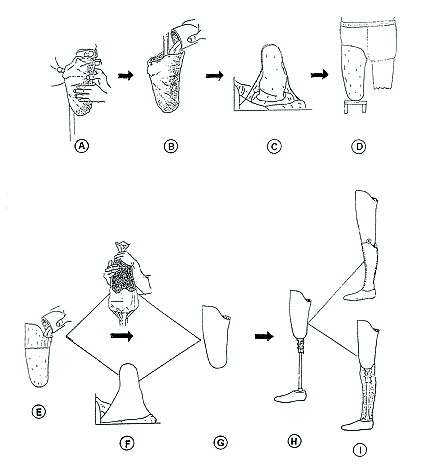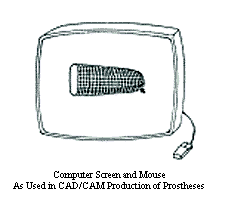
 Whether the prosthesis is to be a crustacean or an endoskeletal (often called "modular") type, the prosthetist begins by wrapping the stump with plaster-of-Paris bandages to obtain a negative mold. A positive model is made by filling the negative mold with a mixture of plaster-of-Paris and water, and allowing it to harden.
Whether the prosthesis is to be a crustacean or an endoskeletal (often called "modular") type, the prosthetist begins by wrapping the stump with plaster-of-Paris bandages to obtain a negative mold. A positive model is made by filling the negative mold with a mixture of plaster-of-Paris and water, and allowing it to harden.
After modification of the model to provide the proper characteristics in the finished socket, a plastic socket is formed over it. The first socket is usually transparent for use as "test" or "check" socket to determine if further modifications are needed.
A new method being used by some prosthetists for obtaining a modified model of the stump involves use of a computer and automatic machinery.
Known as CAD/CAM, (Computer-Aided Design \ Computer-Aided Manufacturing), this system permits prosthetists to modify the model more easily since it does not require making and carving an actual plaster model.
The socket is mounted on an adjustable leg for walking trials, and when both the prosthetist and the amputee are satisfied, the limb is ready for the finishing procedures. The crustacean shank may be of plastic-covered wood or all plastic. The endoskeletal type uses carved foam rubber over the supporting tube and the entire prosthesis is encased in a latex or fabric stocking.
Steps in the fabrication of a plastic prosthesis for the trans-femoral amputee are:

The electronic version of this manual is presented by Dankmeyer, Inc., with the permission of the authors. This manual may not be redistributed in any form.